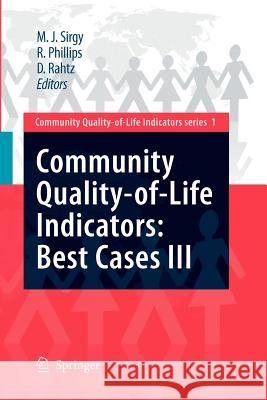Community Quality-Of-Life Indicators: Best Cases III » książka
Community Quality-Of-Life Indicators: Best Cases III
ISBN-13: 9789400736917 / Angielski / Miękka / 2012 / 190 str.
Community Quality-Of-Life Indicators: Best Cases III
ISBN-13: 9789400736917 / Angielski / Miękka / 2012 / 190 str.
(netto: 384,26 VAT: 5%)
Najniższa cena z 30 dni: 385,52
ok. 22 dni roboczych
Bez gwarancji dostawy przed świętami
Darmowa dostawa!
Community quality-of-life (QOL) indicators continue to gain attention and interest in their use as many communities and regions design and apply them. Evolving from early use as data systems, indicators are increasingly being integrated into overall planning and other public policy activities. Their use is found not only in monitoring and evaluation applications, but also in the context of increasing citizen partici- tion in guiding communities towards achieving desired goals. Indeed, the emphasis in many indicator applications now includes linking actions to outcomes making sure that the indicators are integrated, useful and effective in helping communities address QOL issues. The use of QOL indicators to consider a full spectrum of c- munity and regional well-being is exciting and the focus on integration is certain to bring new and innovative applications to the forefront. This is the third book in a series covering best practices in community QOL indicators. Each volume presents individual cases (chapters) of communities at the local or regional levels that have designed and implemented community indicators programs. In Volume I, we present eight chapters from a variety of contexts from the county level in the U. S., to the large megalopolis of Sao Paulo, to looking at a cross section of communities throughout Europe. Also included are three chapters from Canada, a leader in applying community indicator systems."
This book contains "best practices" of community quality-of-life indicator systems implemented in various communities throughout the world. §The cases in this volume describe communities that have launched their own community indicators programs. Elements that are included in the descriptions are the history of the community indicators work within the target region, the planning of community indicators, the actual indicators that were selected, the data collection process, the reporting of the results, and the use of the indicators to guide community development decisions and public policy.











